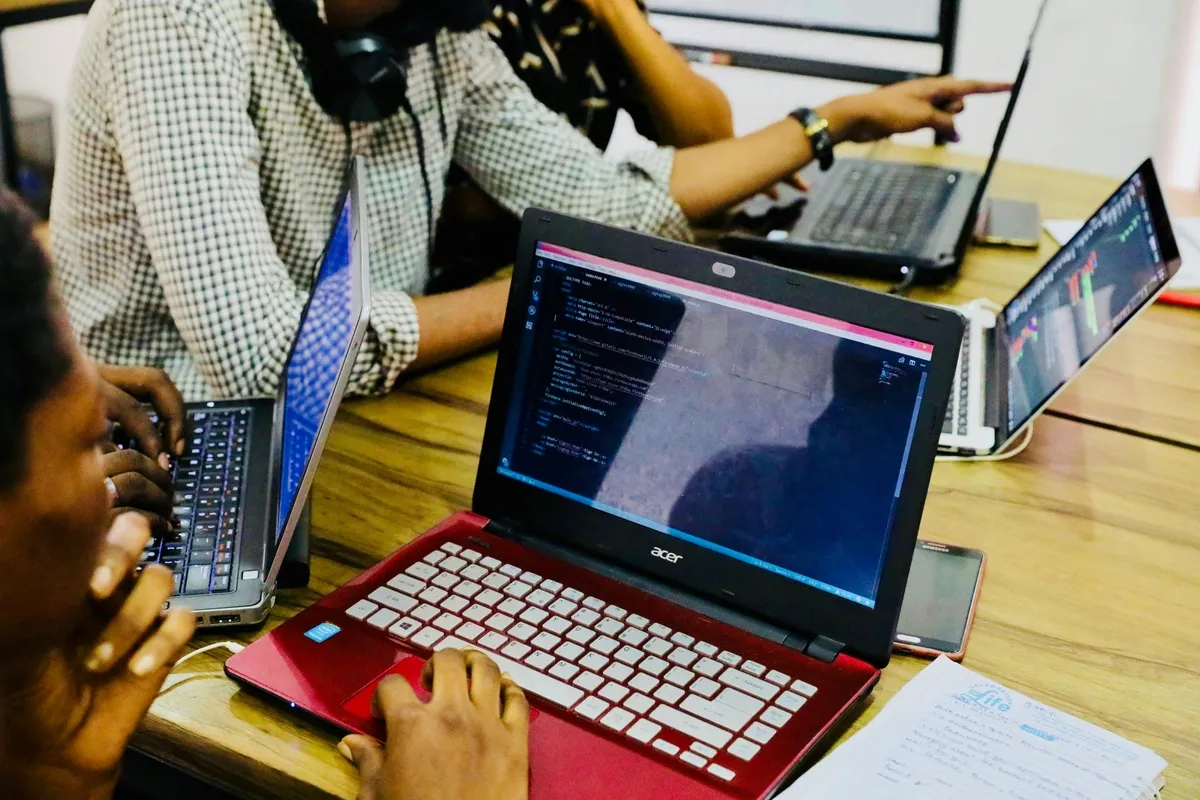
In the fast-paced world of IT and software development, seamless workflow and data synchronization are paramount to maintaining efficiency and accuracy. Integrating time and expense tracking solutions with existing project management tools not only streamlines operations but also enhances productivity by ensuring that all aspects of project management are interconnected. By leveraging advanced integration techniques such as APIs and webhooks, businesses can achieve a cohesive system that simplifies tracking and reporting, ultimately leading to more effective project delivery.
Importance of Integration in IT & Software Development Firms
In the dynamic environment of IT and software development, integration plays a crucial role in ensuring seamless workflows and efficient data synchronization. The ability to connect various applications, typically through their application programming interfaces (APIs), allows data and processes to flow smoothly between systems. This interconnectedness enhances operational efficiency, enabling faster task completion and more streamlined business processes (source).
For IT professionals who often juggle multiple management applications, workflow integration reduces the need to switch between tools, thereby minimizing disruptions and maximizing productivity. This is particularly important in project management, where real-time data access and updates are essential for making informed decisions and maintaining project momentum.
Data synchronization, a key component of successful integration, ensures that information remains consistent and up-to-date across all platforms. This consistency not only prevents data discrepancies but also supports data governance by maintaining accurate records, which is vital for security and regulatory compliance (source).
Integrating time and expense tracking with project management tools offers numerous benefits. It simplifies employee time tracking, providing insights into resource allocation, budget adherence, and project progress. Automated data entry and real-time budget updates help control project costs and enhance overall financial management (source).
Moreover, integrating these functions enhances resource management by allowing project managers to monitor how and when resources are utilized. This strategic allocation of resources, supported by accurate and timely data, leads to better project outcomes. Additionally, the ability to generate detailed time and expense reports helps in tracking workload and providing transparent updates to clients and stakeholders (source).
In conclusion, the integration of time and expense tracking with project management tools is essential for IT and software development firms. It facilitates improved resource management, accurate budgeting, and effective project planning, thereby driving operational efficiency and project success.
Technical Aspects of Integration
To effectively integrate time and expense tracking solutions with existing project management tools, it’s essential to understand the technical requirements and best practices. Successful integration depends on several key factors, including clearly defined integration requirements, the use of APIs and webhooks, and robust security measures.
Explanation of the Technical Requirements for Successful Integration
Successful integration begins with a comprehensive understanding of the integration requirements. These requirements outline the specific functionalities and behaviors expected from the integration. An Integration Requirements Document (IRD) is a valuable tool that details these expectations, including timelines, goals, and roles (source). The IRD serves as a blueprint, ensuring all stakeholders are on the same page and that the integration project aligns with business objectives.
APIs and Webhooks: How they Facilitate Seamless Data Flow Between Systems
Application Programming Interfaces (APIs) and webhooks are pivotal in facilitating seamless data flow. APIs allow different software applications to communicate and exchange data, enabling automation and enhancing productivity (source). APIs act as intermediaries, enabling data to move between systems without manual intervention.
Webhooks, on the other hand, are event-driven mechanisms that push information between apps based on specific triggers (source). Unlike APIs, which require periodic polling for updates, webhooks send real-time notifications, ensuring immediate data synchronization. This real-time communication is crucial for maintaining up-to-date information across integrated systems.
Security Considerations When Integrating Multiple Software Solutions
Security is a critical consideration when integrating multiple software solutions. Integration security involves measures to protect data integrity, confidentiality, and availability during transmission and processing. Key security practices include using encrypted APIs, implementing strong authentication and access controls, and ensuring robust error handling and logging (source).
Common security concerns include unauthorized access, data breaches, and compliance violations. Addressing these concerns requires a multi-layered approach, incorporating encryption, secure API gateways, and continuous monitoring to detect and mitigate potential threats (source).
By adhering to these technical requirements and best practices, IT and software development firms can achieve seamless and secure integration of their time and expense tracking solutions with project management tools, enhancing overall efficiency and productivity.
Practical Implementation Steps
Integrating Minute7 with popular project management tools can significantly enhance efficiency and streamline workflows for IT and software development firms. Below is a step-by-step guide to help you achieve this integration, along with common challenges and best practices to ensure a smooth process.
Step-by-Step Guide to Integrating Minute7 with Project Management Tools
-
Identify Integration Objectives: Clearly define what you aim to achieve with the integration. Whether it’s to streamline time tracking, improve expense management, or enhance project reporting, having a clear goal will guide the integration process.
-
Choose the Right Tools: Ensure the project management tools you use (e.g., Asana, Trello, Jira) are compatible with Minute7. Check the API documentation for both Minute7 and your project management tools to understand their integration capabilities (source).
-
Set Up API Access: Obtain API keys from both Minute7 and your project management tools. These keys will allow the systems to communicate and exchange data. Follow the API documentation to configure the necessary endpoints and authentication methods.
-
Configure Webhooks: Utilize webhooks to enable real-time data synchronization. Set up webhooks in Minute7 to trigger updates in your project management tools whenever time or expense entries are made. This ensures that all data is up-to-date across platforms (source).
-
Test the Integration: Before going live, thoroughly test the integration to ensure data is being correctly transferred and synchronized. Identify and resolve any issues that arise during the testing phase.
-
Go Live and Monitor: Once testing is complete, implement the integration in your live environment. Continuously monitor the integration to ensure it functions as expected and make adjustments as necessary.
Common Challenges and How to Overcome Them
-
Compatibility Issues: Ensure that both systems support the necessary APIs and webhooks. If compatibility issues arise, consider using middleware solutions to bridge the gap between the two platforms.
-
Data Security and Privacy: Protect sensitive data by using encrypted APIs and implementing strong authentication measures. Regularly audit the integration for security vulnerabilities (source).
-
User Adoption: Encourage user adoption by providing training sessions and creating detailed documentation. Highlight the benefits of the integration to motivate users to embrace the new system.
Best Practices for Ensuring Smooth Integration and User Adoption
-
Involve Support Teams: Engage your IT and support teams early in the integration process. Their expertise can help anticipate and mitigate potential issues.
-
Effective Communication: Keep all stakeholders informed about the integration process, timelines, and any changes to workflows. Clear communication helps manage expectations and reduces resistance to change.
-
Internal Champions: Identify key users who can act as internal champions for the integration. Their advocacy can drive user adoption and provide valuable feedback for continuous improvement.
-
Training and Education: Offer comprehensive training sessions to familiarize users with the new integrated system. Provide ongoing support and resources to address any questions or concerns.
-
Iterative Improvement: Continuously gather feedback and make iterative improvements to the integration. Regular updates and enhancements ensure the system remains efficient and user-friendly.
By following these practical implementation steps and adhering to best practices, IT and software development firms can successfully integrate Minute7 with their project management tools, leading to enhanced productivity and streamlined operations.
How Minute7 Facilitates Seamless Integration for IT and Software Development Firms
Integrating time and expense tracking solutions with existing project management tools is crucial for IT and software development firms aiming to enhance workflow efficiency and data accuracy. Minute7 stands out as a powerful ally in this endeavor, offering a robust platform that simplifies the integration process and maximizes the benefits of such connectivity.
Minute7’s seamless integration with QuickBooks is a testament to its capability to synchronize with other project management tools. By leveraging Minute7’s comprehensive APIs and webhooks, businesses can ensure real-time data flow and synchronization, thereby maintaining up-to-date and accurate records across all platforms. This interconnectedness eliminates the need for manual data entry, reducing errors and saving valuable time.
The implementation process is straightforward, thanks to Minute7’s user-friendly interface and detailed documentation. Whether you are integrating with Asana, Trello, or Jira, Minute7 provides clear guidelines and support to facilitate a smooth integration. This ensures that your team can quickly adapt to the new system without significant disruptions to their workflow.
Moreover, Minute7 addresses common integration challenges by offering robust security measures. The platform employs encrypted APIs and strong authentication controls to protect sensitive data during transmission and processing. This multi-layered security approach ensures that your integration is not only efficient but also secure.
In summary, Minute7 is an invaluable tool for IT and software development firms looking to integrate time and expense tracking with their project management tools. Its seamless integration capabilities, user-friendly implementation process, and robust security measures make it an ideal solution for businesses aiming to enhance operational efficiency and project success. By choosing Minute7, firms can streamline their workflows, improve resource management, and achieve more accurate budgeting and reporting, ultimately driving better project outcomes.
For more information on how Minute7 can transform your project management and time tracking processes, visit Minute7.



